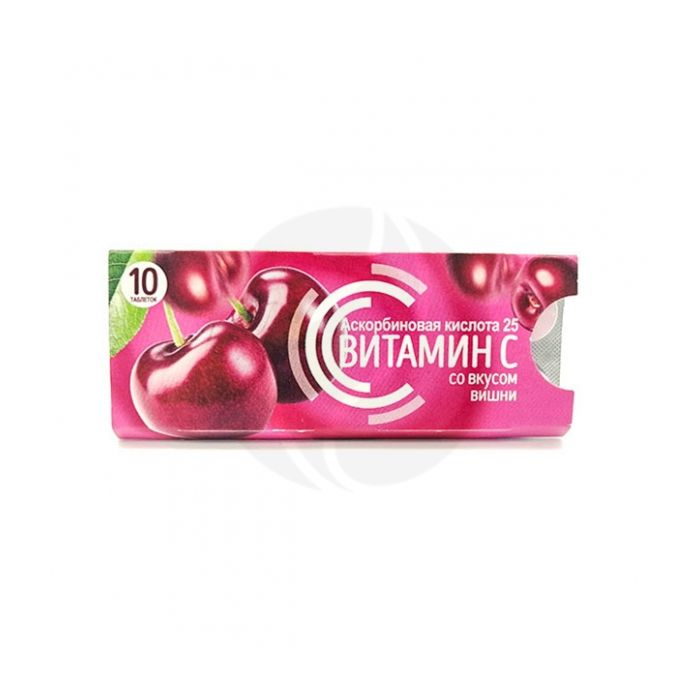Ascorbic acid Vit. C cherry tablets BAA 25mg, No. 10
Expiration Date: 05/2027
Russian Pharmacy name:
Аскорбиновая кислота Вит.С вишня таблетки БАД 25мг, №10
- prevention and treatment of vitamin C hypo- and avitaminosis
- ensuring an increased need for vitamin C during the growth period,
pregnancy, breastfeeding
- high physical and mental stress, overwork,
stressful conditions
- during the recovery period after prolonged severe illness
- hemorrhagic diathesis, bleeding
- overdose of indirect anticoagulants
- sluggish healing wounds and bone fractures.
Ascorbic acid tablets are taken orally after meals.
For prophylactic purposes, adults are prescribed 0.05-0.1 g per day; during pregnancy, in the postpartum period and with a low content of vitamin C in the milk of lactating women, 0.3 g per day is prescribed for 10-15 days, after which, prophylactically, 0.1 g per day during the entire lactation period. For prophylactic purposes, children from 6 years old are prescribed 0.025 g 2-3 times a day, with a therapeutic purpose, 0.05-0.1 g 2-3 times a day. The timing of treatment depends on the nature and course of the disease.
vitamin C
Pharmacological properties
Pharmacokinetics
Ascorbic acid is rapidly absorbed in the duodenum and jejunum. Within 30 minutes after administration, the content of ascorbic acid in the blood increases markedly, its capture by tissues begins, while
it first turns into dehydroascorbic acid, which has the ability to penetrate cell membranes without energy costs and quickly recover in the cell. Ascorbic acid in tissues is found almost exclusively intracellularly, it is determined in three forms - ascorbic, dehydroascorbic acids and ascorbigen (bound ascorbic acid). The distribution between the organs is uneven: there is a lot of it in the endocrine glands, especially in the adrenal glands, less in the brain, kidneys, liver, in the heart and skeletal muscles. Ascorbic acid is partially metabolized and excreted up to 90% by the kidneys in the form of oxalate, partially in free form.
Pharmacodynamics
Ascorbic acid, which includes a dienol group, has pronounced reducing properties. This is related to its participation in redox processes, regulation of carbohydrate metabolism, blood coagulation, biosynthesis of steroid hormones, tissue regeneration, synthesis of collagen and procollagen, normalization of capillary permeability. Lack of ascorbic acid in food, which is not synthesized in the body, contributes to the development of avitaminosis. or hypovitaminosis C.
Side effects
- with prolonged use of large doses - headache, increased excitability of the central nervous system, insomnia
- moderate pollakiuria, with prolonged use - hyperoxaluria, nephrolithiasis, damage to the glomerular apparatus of the kidneys
- irritation of the mucous membrane of the gastrointestinal tract, with prolonged use - nausea, vomiting, diarrhea, hyperacid gastritis, ulceration of the gastrointestinal mucosa
- with prolonged use - decrease in capillary permeability
- skin rash, flushing of the skin

